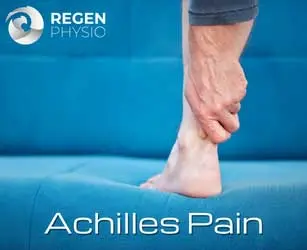Hamstring muscle injuries contribute significantly to the total number of lower extremity injuries in the sporting population. These injuries are not only common, but they can be long standing and prone to high risk of re-injury. Hamstring injuries are typically more prevalent in sports that demand regular stretch-shortening patterns from the hamstrings such as high speed acceleration/deceleration, directional changes and kicking.
There are many risk factors for sustaining a hamstring injury, the most significant is previous hamstring injury itself. Other risk factors such as muscular imbalances, hamstring muscle weakness, posture, fatigue and poor warm up techniques also play a part. Significant recovery times and high reoccurrence rates with these injuries propose the tremendous challenge of effective return to play. The greatest potential impact for reducing the prevalence of hamstring injury can be achieved through developing improved techniques for primary injury prevention.
Types of hamstring muscle injury

Hamstring injuries can be categorised by the presence of sudden onset of posterior thigh pain with possible tenderness on palpation and a decrease in function. Type 1 hamstring injuries occur during high speed acceleration and deceleration, this typically effects the bicep femoris muscle, particularly the proximal aspect of the musculotendinous junction. For this reason, it is important to differentiate a high hamstring strain from a proximal hamstring tendinopathy. Type 2 hamstring injuries occur from an overstretched movement, this typically involves the proximal muscle belly of the Semimembranosus. Type 1 in juries are the most common with injury to the bicep femoris accounting for 83% of all hamstring injuries. Once a hamstring strain has been diagnoses a grade of severity can also be determined.
Grade 1 Hamstring Injury.
• Tightness in the back of the thigh that doesn’t effect walking
• Some pain and unable to run at full speed
• Maybe be mild swelling present but not always
• Bending your knee against resistance is unlikely to cause much pain
Grade 2 Hamstring Injury.
• Walking pattern may be effected which may cause a limp
• Sudden twinges of hamstring pain may occur during activity
• Swelling may be present and the area will be tender to palpate
• Painful when bending your knee against resistance
Grade 3 Hamstring Injury.
• This is a severe hamstring strain involving a tear to half or all of the muscle belly
• Severe pain and weakness will be present making walking very difficult
• Swelling can be noticed immediately with bruising normally appearing within 24 hours
Hamstring Injury Rehabilitation.
Acute management
• Protection/rest to avoid re aggravating the injury and allowing the body to begin healing
• Ice applying ice will reduce blood flow to the area and subsequently reduce swelling
• Compression with tubular bandage
• Elevation to reduce swelling
Additionally NSAIDS such as ibuprofen and paracetamol can work to reduce the immediate swelling.
Post acute Phase
• Normalise full range of motion and tissue extensibility. This phase may consist of massage techniques, soft tissue release and post isometric relaxation stretches in order to achieve full range. This would not be recommended in the first 5-7 days.
• Passive and active static stretching
• Strengthen the musculature around the lower back, hip, knee and ankle
Long term rehabilitation
Rehabilitation of these injuries can be tricky, especially if this is a reoccurring injury which can take longer to rehab than an initial injury. Methods to rehabbing these injuries are as follows;
• Eccentric hamstring loading
• Neuromuscular training
• Improving lumbo-pelvic control
• Specific warm-up protocols
• Stretching
• Plyometric/bounding training
The goal in this phase is to prepare the patient for a return to sports therefore simulating sports specific environments is crucial.
An example of how this may look as part of a progression protocol
Phase 1
• Promote neuromuscular control within a protected range of motion
• Isometrics of the lumbopelvic musculature, single-limb balance exercises, and short stride frontal plane stepping drills, while avoiding isolated resistance training of the injured hamstring muscle.
• The exercises should always be performed without pain, with the intensity of the exercises progressed from light to moderate as tolerated.
Progression Criteria
1) normal walking stride without pain
2) very low speed jogging without pain
3) pain-free isometric contraction against sub-maximal (50-70%) resistance during prone knee flexion (90°) manual strength test.
Phase 2
• Gradual increase in hamstring lengthening, compared to the limited range of motion allowed in phase I.
• This approach is based on observations that mobilisation of skeletal muscle 5-7 days after injury can enhance fibre regeneration.
• Emphasis on neuromuscular control, agility drills, and trunk stabilisation, exercises are performed with a progressive increase in speed and intensity.
• Sub-maximal eccentric strengthening exercises near mid-length of the muscle can be initiated as part of functional movement patterns rather than through exercises isolating the hamstrings.
Progression Criteria
1) full strength (5/5) without pain during a 1 repetition maximum effort isometric manual muscle test in prone with the knee flexed at 90°
2) Forward and backward jogging at 50% maximum speed without pain.
Phase 3
• Agility and sport-specific drills should be emphasised that involve quick direction changes and technique training.
• Trunk stabilisation exercises should become more challenging by incorporating transverse plane motions and asymmetrical postures.
• Hamstring strengthening should be progressed toward end range of motion with appropriate increases in resistance.
Return to Sport Criteria
• Athletes should be cleared to return to unrestricted sporting activities once full range of motion, strength, and functional abilities can be performed without complaints of pain or stiffness.
• When assessing strength, the athlete should be able to complete 4 consecutive pain-free repetitions of maximum effort manual strength test in each prone knee flexion position (90° and 15°).
• If possible, isokinetic strength testing should also be performed under both concentric and eccentric action conditions.
• Functional ability testing should incorporate sport-related movements specific to the athlete, with intensity and speed near maximum.
References:
Heiderscheit, B., Sherry, M., Silder, A., Chumanov, E. and Thelen, D. (2010). Hamstring Strain Injuries: Recommendations for Diagnosis, Rehabilitation, and Injury Prevention. Journal of Orthopaedic & Sports Physical Therapy, 40(2), pp.67-81.



